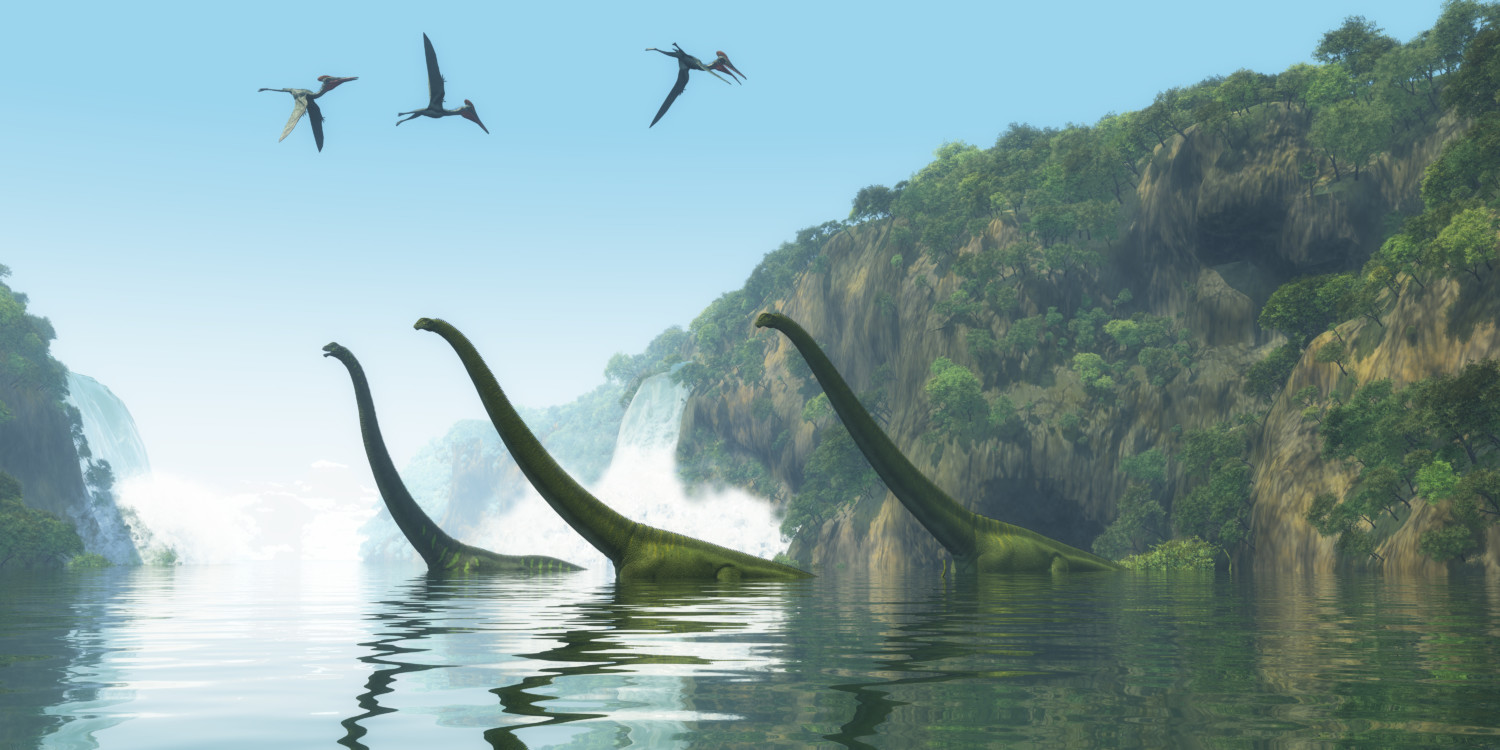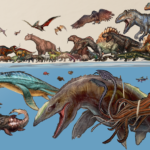The extinction of the dinosaurs, a monumental event that occurred around 66 million years ago at the end of the Cretaceous period, has been the subject of intense scientific research and public fascination. These majestic creatures, which once ruled the Earth for more than 160 million years, vanished seemingly overnight. The question, “What caused the extinction of the dinosaurs?” has sparked debates, discoveries, and various theories. While many factors may have contributed to their demise, the most widely accepted explanation involves a catastrophic combination of environmental disruptions.
The Role of the Asteroid Impact
Perhaps the most famous and widely supported explanation for the dinosaurs’ extinction is the impact of a massive asteroid or comet. The theory, first proposed by Luis Alvarez in 1980, suggests that a giant object, approximately 10 to 15 kilometers in diameter, struck the Earth near the present-day Yucatán Peninsula in Mexico. This impact, which created the Chicxulub crater, released an enormous amount of energy, triggering a series of devastating effects.
The collision would have resulted in massive wildfires, tsunamis, and a release of particulate matter into the atmosphere. This debris blocked sunlight, causing a “nuclear winter” effect. With sunlight being blocked, temperatures plummeted, disrupting ecosystems and food chains. The sudden lack of sunlight would have hindered photosynthesis, leading to a collapse in plant life and, in turn, devastating herbivorous dinosaurs that relied on vegetation for survival. As these herbivores perished, the carnivorous dinosaurs faced a collapse in their food sources as well, triggering a mass extinction event.
Volcanic Activity: A Double Blow
In addition to the asteroid impact, scientists believe that intense volcanic activity also played a crucial role in the extinction event. Around the same time as the asteroid impact, massive volcanic eruptions occurred in the region known as the Deccan Traps, located in present-day India. These eruptions released vast amounts of volcanic gases, including carbon dioxide and sulfur dioxide, into the atmosphere.
The carbon dioxide would have contributed to a long-term warming of the planet, while the sulfur dioxide would have led to acid rain and a temporary cooling effect. The combination of these changes created a highly unstable and hostile environment for life on Earth. Many species struggled to adapt to the rapidly changing climate, further exacerbating the mass extinction event.
The Climate Shift: Warming and Cooling
The Earth’s climate at the time of the dinosaurs was relatively warm and stable, with polar regions free of ice caps. However, the combination of asteroid impact and volcanic activity likely caused dramatic shifts in climate. While the asteroid impact would have caused immediate cooling due to sunlight blockage, the volcanic activity may have contributed to a longer-term warming effect due to the release of greenhouse gases.
This drastic fluctuation in temperatures – from extreme cooling to long-term warming – could have caused significant stress on ecosystems. Plants and animals that had adapted to a warm climate now had to cope with rapid environmental changes, including cooling, warming, and acidification of the oceans. These unpredictable climate conditions were particularly harmful to large, specialized creatures like dinosaurs, who found it increasingly difficult to find food and shelter.
The Changing Ecosystems
During the Cretaceous period, the Earth was home to a wide variety of ecosystems. Dinosaurs lived in diverse habitats ranging from dense forests to arid deserts, each with its own array of species. However, the combined environmental changes likely led to widespread habitat destruction. The disruption of ecosystems by the asteroid impact, followed by the climatic shifts caused by volcanic activity, would have made these habitats less hospitable. Many species of plants and animals, including dinosaurs, could not adapt quickly enough to the new conditions, leading to their extinction.
Moreover, some researchers suggest that the extinction event might have affected different species of dinosaurs in varying ways. Large-bodied dinosaurs, for example, may have been more vulnerable to food shortages and environmental stress than smaller species. Evidence shows that some smaller dinosaurs, birds in particular, survived the mass extinction and went on to thrive in the post-dinosaur world, which might indicate a survival advantage to certain evolutionary traits during times of crisis.
Other Contributing Factors
While the asteroid impact and volcanic activity are the primary causes of the dinosaurs’ extinction, other factors could have contributed to their downfall. Some researchers have proposed that climate changes over millions of years leading up to the extinction may have weakened ecosystems, making them more susceptible to sudden catastrophic events.
Additionally, the shifting of tectonic plates and changes in sea levels over the course of the Cretaceous period may have gradually altered ecosystems, leading to long-term environmental instability. By the time the asteroid struck, many species of dinosaurs were already under stress from these ongoing changes.

Conclusion
The extinction of the dinosaurs remains one of Earth’s greatest mysteries, but the most widely accepted theory points to the catastrophic combination of an asteroid impact, volcanic activity, and dramatic shifts in climate. The asteroid’s impact caused immediate and widespread destruction, while volcanic eruptions and the changing climate created long-lasting environmental stress that made survival impossible for most dinosaur species.
Although the dinosaurs disappeared from Earth, their legacy lives on through birds, the only direct descendants of theropod dinosaurs. The extinction event itself serves as a powerful reminder of the fragility of life and how the planet’s ecosystems can be dramatically altered by sudden, catastrophic events.
While much has been learned, the study of the dinosaurs’ extinction continues to captivate scientists and the public alike. Each new discovery brings us closer to understanding not just what happened, but why it mattered for the course of life on Earth.



